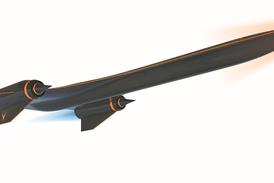VLJs offer the performance of business jets at the price of general aviation aircraft, and are expected to appeal to private owner/flyers, air-taxi operators and corporate flight departments. This scope of customers – and the expected range of pilot experience – poses the central challenge to the safe operation of VLJs and their efficient integration into the airspace system. The industry has moved to address the issue.
- Training – the National Business Aviation Association has issued training guidelines for VLJs, developed with manufacturers, training providers and insurance carriers. These outline the minimum requirements for a VLJ transition and recurrent training programme. VLJ manufacturers like Cessna, Eclipse and Embraer plan type-rating programmes that include skills assessment, web-based pre-training, simulator-based flight training and the provision of mentor pilots to fly with newly qualified VLJ pilots. Cessna is teamed with FlightSafety International to provide training for the Citation Mustang, while Eclipse is working with Denver, Colorado-based United Services, the training arm of United Airlines. “The training is the same as that required to fly a 747,” says Eclipse chief executive Vern Raburn, “and the aircraft is easier to operate than a regular jet.”
- Maintenance – major VLJ manufacturers plan to offer comprehensive, fee-per-flight-hour maintenance programmes, and to support their aircraft via a network of service centres. Eclipse and Embraer plan to offer support programmes that provide services including flight planning and despatch, as well as maintenance tracking and scheduling.
- System capacity – VLJs are not expected to enter service in large numbers overnight. Eclipse has 70% confidence of receiving certification by the end of March, and 95% of achieving approval by May. Cessna does not expect to start significant deliveries of the Mustang until early 2007. Air taxi operators meanwhile plan a phased introduction.
Source: Flight International























